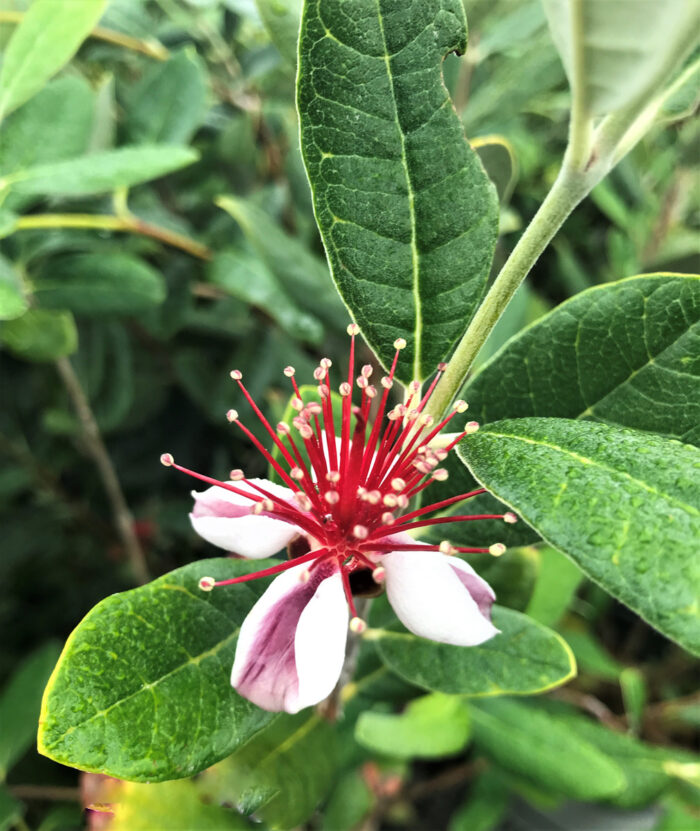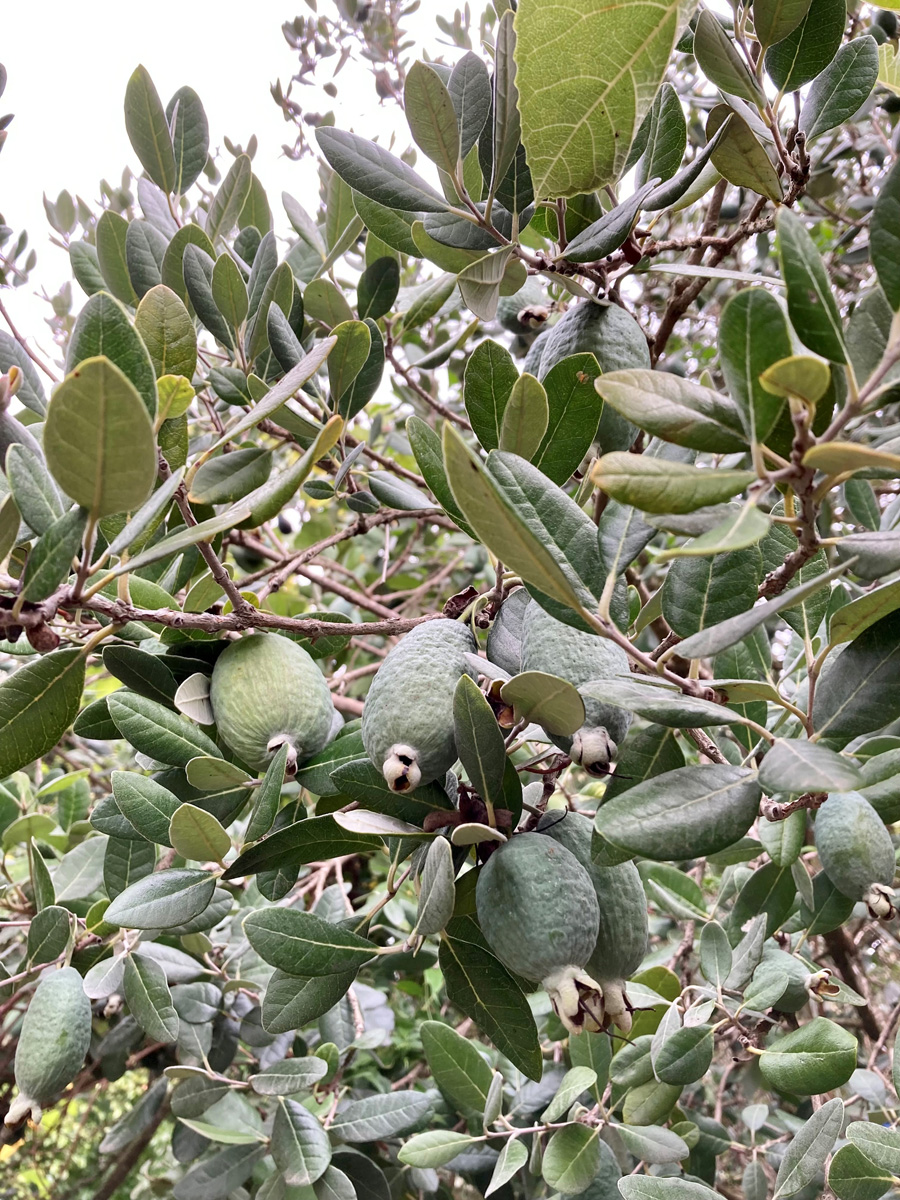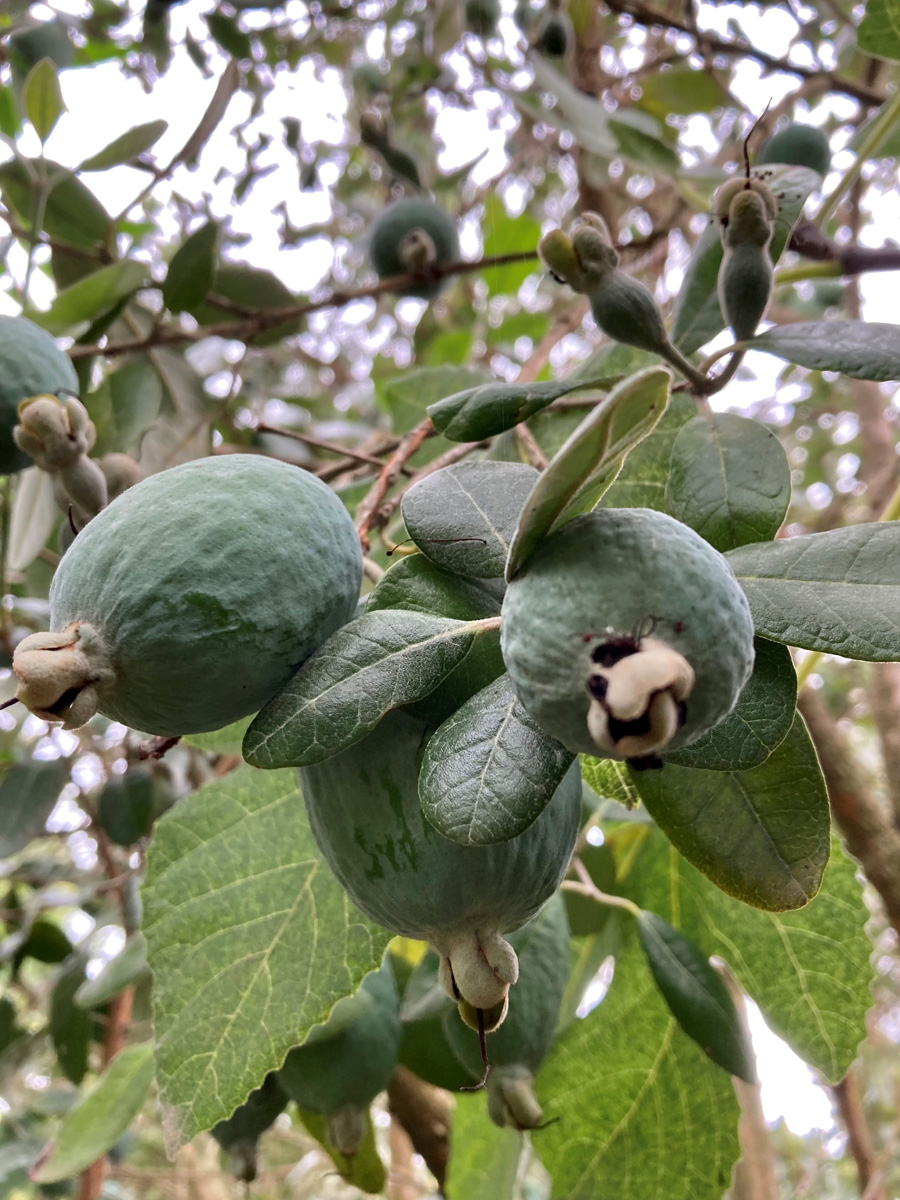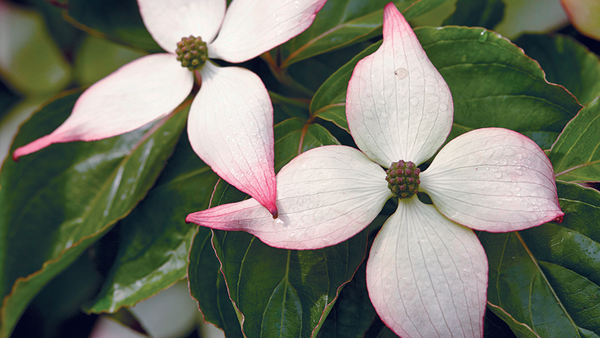
With its delicious blooms and abundant yields of late season fruit, pineapple guava (Feijoa sellowiana, Zones 8–11) definitely deserves a spot in the orchard or kitchen garden. But this tree is so much more than “just” an edible. Pineapple guava is also one of the most easy-care, attractive, and versatile ornamental landscape plants a Northern California gardener can grow.
An evergreen plant that offers lots of versatility
Pineapple guava is evergreen, and its natural form is upright and branching, topping out at about 10 to 15 feet tall and wide. That makes it the perfect specimen tree for smaller spaces. It’s also easily trained into a topiary or espalier form and can even be planted in multiples to shear into a dense hedge. Whatever way you grow it, a pineapple guava is a great addition to any sunny landscape, with an attractive trunk and stems covered in silver-brown bark. Thick, silver-gray, oval-shaped leaves cover the tree year-round (the silver being most prominent on the underside of the leaves). In spring, unusual, colorful, and succulent-textured blooms appear among the leafy foliage. These tasty blooms are tangy-sweet. They’re great additions to compotes, jams, or jellies, and they can be used for garnishes on cupcakes or salads. The blossoms are also rich in nectar, much to the delight of visiting bees, butterflies, and hummingbirds. This is a great habitat plant for wildlife!

The fragrant fruit follows in late fall (October in my area). Until it’s fully ripe, the fruit remains almost the exact same color as the foliage, so it’s difficult to tell just how big a crop your tree will produce until the fruit gets a blush of russet coloring and begins dropping to the ground. The fruit is egg-shaped and about 3 to 5 inches long, and its interior flesh boasts a taste best described as a blend of pineapple-melon-mint and citrus. The fruit from my tree appears to taste even better after a light frost, which seems to add an almost fizzy texture to it. It is fabulous in sherbets or ice cream or devoured fresh from the garden.
Growing is a cinch, if you follow a few simple steps
Pineapple guava works well when planted out in the landscape or in a large container. Give it a full-sun location, and plant it in rich, well-drained soil. It’s best to amend your soil well, adding well-aged organic compost and a handful of all-purpose, slow-release organic fertilizer at planting time. Pineapple guavas are wonderfully drought tolerant at maturity, but they appreciate light yet regular irrigation until established, then a deep soaking once a week during the hottest, driest months once mature. Most pests avoid pineapple guava, even deer and gophers.

Prune occasionally, and do some fall cleanup
The only pruning that is needed if you’re growing pineapple guava as a tree is periodically tidying up any dead or crossed branches. If you have a hedge, espalier, or topiary form, a little more pruning and tidying is needed to keep it to the desired shape. Be sure to clean up fallen fruit in late autumn to avoid attracting wasps, overwintering insects, or rodents. Also in late autumn, add a 3- to 4-inch layer of organic compost around the base of your pineapple guava to act as a moisture-retaining, nutrient-rich mulch.
Very few plants offer as much to a gardener without requiring practically anything in return, making pineapple guava the ultimate low-care beauty.
—Fionuala Campion is the owner and manager of Cottage Gardens of Petaluma in Petaluma, California.
Learn more:
5 or 6 Reasons to Grow Pineapple Guava
How to Prune Dwarf Fruit Trees
Fine Gardening Recommended Products

DeWalt Variable-Speed Cordless Reciprocating Saw
Fine Gardening receives a commission for items purchased through links on this site, including Amazon Associates and other affiliate advertising programs.
- 18.31 x 6.13 x 4 inches
- 1-1/8-inch stroke length
- Variable speed trigger with 0-3000 spm

The Nature of Oaks: The Rich Ecology of Our Most Essential Native Trees
Fine Gardening receives a commission for items purchased through links on this site, including Amazon Associates and other affiliate advertising programs.

ARS Telescoping Long Reach Pruner
Fine Gardening receives a commission for items purchased through links on this site, including Amazon Associates and other affiliate advertising programs.



















Comments
Log in or create an account to post a comment.
Sign up Log in